This feature has been produced in association with Hotlines.
Doctor! Doctor! I have double vision, I am seeing two of everything.
Dr: “Take a seat on the chair there”
Which one?
OK, it’s probably not the best doctor doctor joke of the genre (personally, I like the one that goes ‘I keep comparing things with something else’ ‘Don’t worry, it’s only analogy’), but it is fitting to our story here. Dr Chris Leatt, the man behind Leatt mountain bike and moto products, is already a medical doctor, but is also well on his way to becoming an academic doctor too. And of course, if you told him you were seeing two of everything after a mountain bike crash, he’d have you following a bunch of concussion protocols and treatments quicker than you can say PhD.
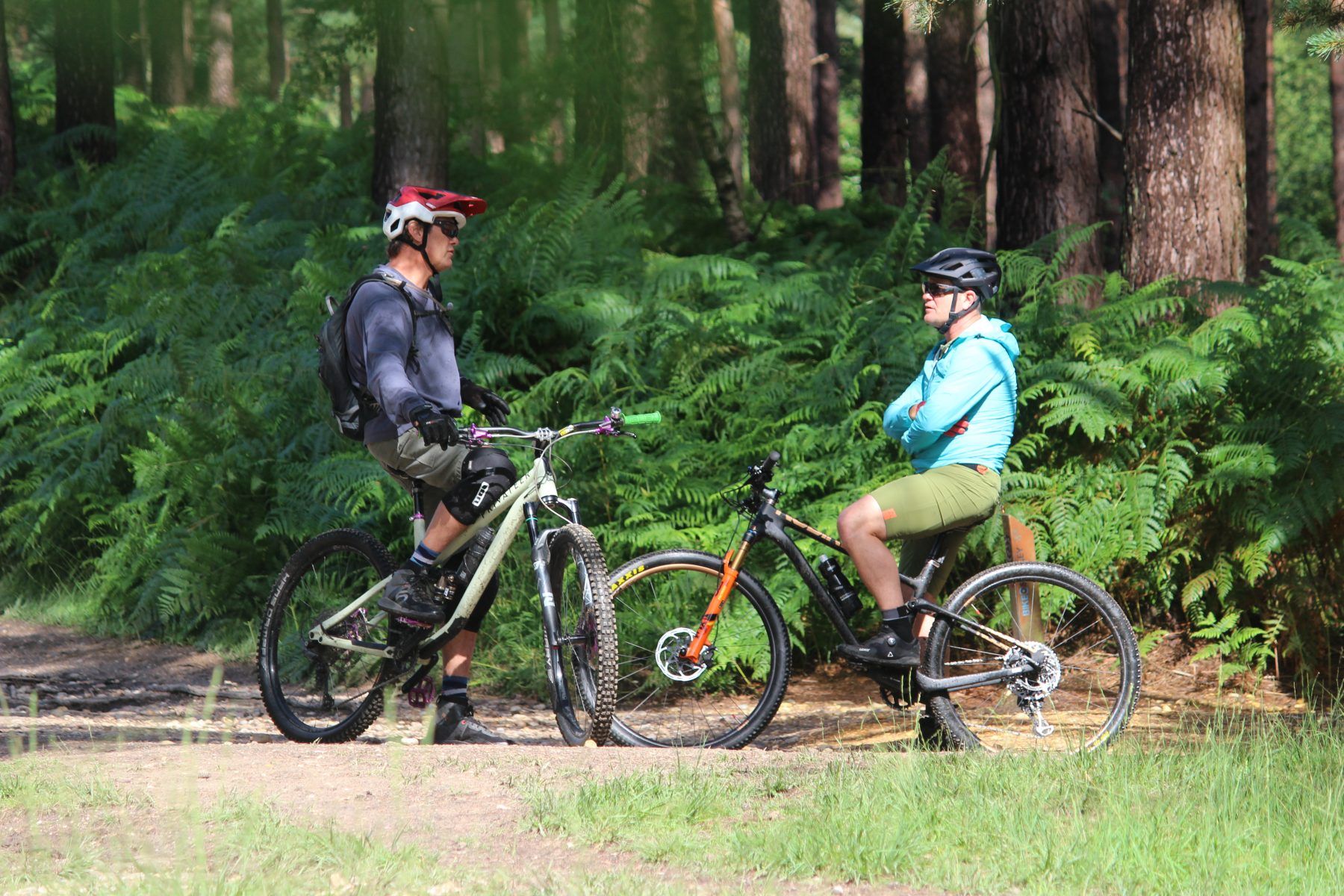
We hung out, we rode bikes, and we asked lots of questions.
My meet up with Chris gives him an excuse to leave his desk where he’s writing up his PhD and venture out on the trails at Swinley. It’s the first time his NS Synonym has tasted dirt, though his spritely efforts round the pedally trail suggest he’s managed plenty of road rides on his XC machine. He’s over in the UK on what’s become an extended trip thanks to Covid travel disruption. Apart from the not insignificant inconvenience of it rendering his South African fixed wing pilot’s licence out of date (he did manage to convert his SA helicopter license to a UK one) – the extended trip has simply given Chris and his wife the opportunity to scope out more areas of the UK and spend time with friends and family. With their children all grown up and living back home in South Africa, the empty nesters have spied the potential to spend more time in the UK in the future.

That their children are now fully grown adults is a measure of just how long Chris has been working to protect our necks – it was way back in 2001 when his son was just four that he started on what would become his life’s work. Together at a motorbike event, just two weeks after his son had started riding motocross, they witnessed a tragic accident in which Alan Selby broke his neck and died, despite Chris’ efforts at the scene to save his fellow rider. Even with all Chris’ medical training and experience as a surgeon with specific trauma and neurosurgery experience, there was nothing he could do. But Chris wondered whether perhaps there was something that could be designed to give riders a better chance of survival in the event of a crash – something any rider could wear as a preventative measure. He immediately told his son there would be no more motocross until he had found such a solution, and set about designing what would become the Leatt neck brace.
Same protection, different price points
What is available today at a range of price points – with the price points offering lighter materials and extra comfort features, but all offering the same standard of safety features – took three years in the initial development. Chris wanted to design a brace that would prevent the spine from the types of loading that cause the neck to break – but didn’t want to cause other injurious consequences as a result of changing the motion and forces around the neck, back and shoulders. If you ever played one of those drinking straw bridge building science challenges at school, you’ll maybe know how reinforcing one spot causes all the forces to move to another spot, so it collapses somewhere else.
To avoid the transferring of forces to other parts of the spine and body, the Leatt neck brace is designed with a number of break off points. If you’re in a collision that pushes you head and neck through a range of motion and transfers a force into these points, the neck brace will first absorb and slow the movement, and then eventually (if the hit is severe enough) break away to prevent transference injuries. In this way your lower vertebrate, sternum and collarbones are protected.
Chris is at pains to point out that the myth that neck braces cause collar bones injuries is just that: a myth and misconception. The neck brace is shaped so that it doesn’t sit on the collar bones, and in the event of a crash onto your shoulder there’s plenty of room for it to move without connecting with the brace. If your collar bone breaks because you landed on it or put out your arm, it would have broken anyway – the neck brace neither causes nor protects from this. However, there’s a third common way to break your collarbone that the brace does give protection from: these are breaks caused by your helmet hitting your collarbone. The neck brace will meet your helmet and absorb impact before it meets your shoulder, and studies show there is up to a 45% reduction in collarbone breaks as a result of wearing a neck brace.
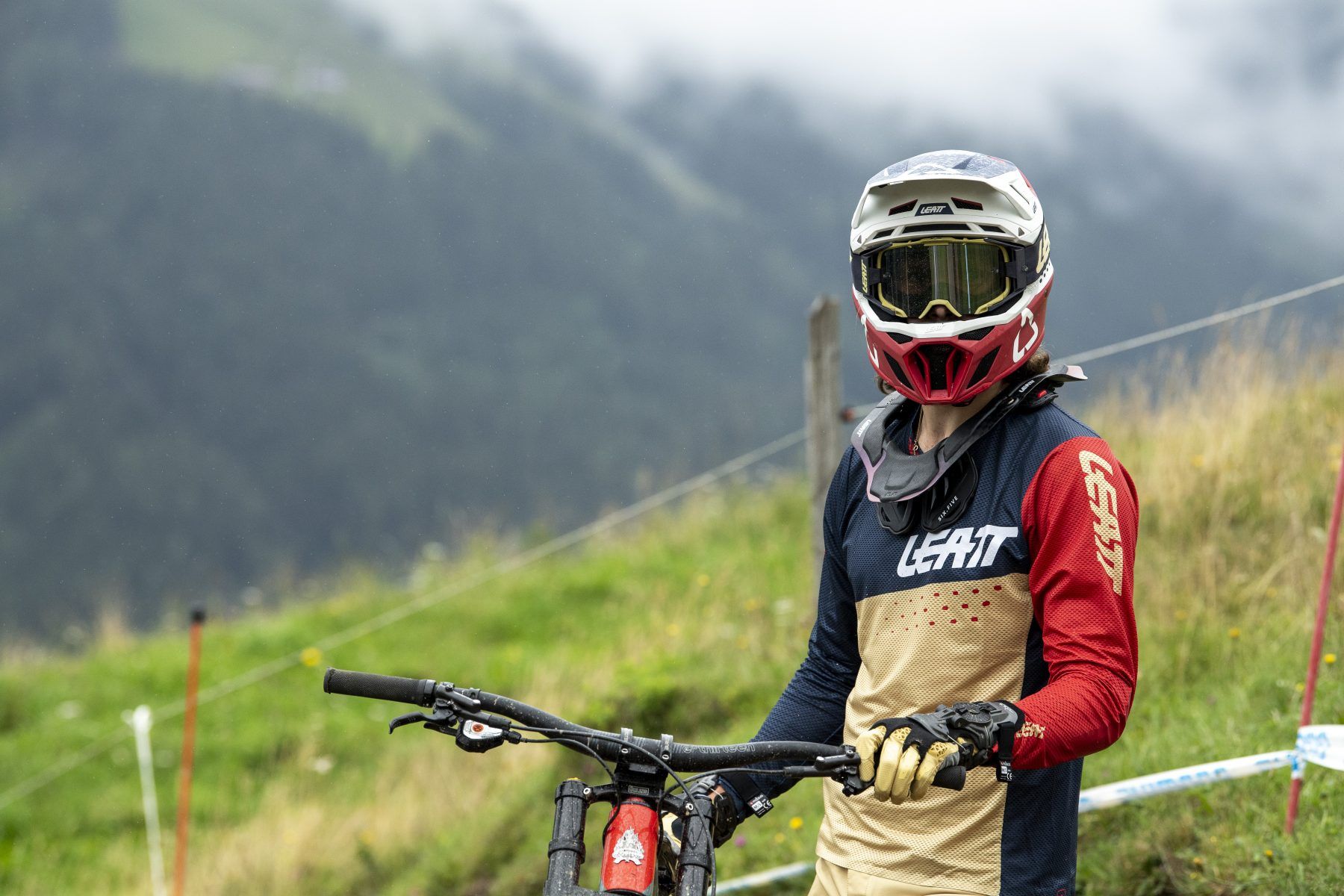
It’s 20 years since the crash that caused Chris to start working on the neck brace to protect us from spinal injuries. Since then, it’s become apparent that there’s another potentially catastrophic and life changing injury the riders risk: brain injury. Thankfully today’s riders are increasingly aware of the need to take time out after a blow to the head, and to take recovery time even after minor concussions. But there is also a mounting body of evidence that repeated small impacts to the head carry a risk of brain injury, and Chris is keen to raise awareness of this among riders – and of course to provide protection from it.
As with his work on the neck brace, Chris has drawn on scientific evidence, studies and data from other sports. The American Football’s NFL in particular have conducted a number of studies and now have data from helmet telemetry that helps doctors understand the effects of forces on the brain. Just as overall exposure to radiation can be measured to prevent workers receiving dangerous doses of radiation over time, now American Football players can be called off the pitch when their coach sees that an impact is severe enough to cause potential brain injury. Also under study is exactly where the cumulative level impacts could be dangerous, but the fact that all the little hits add up seems significant.
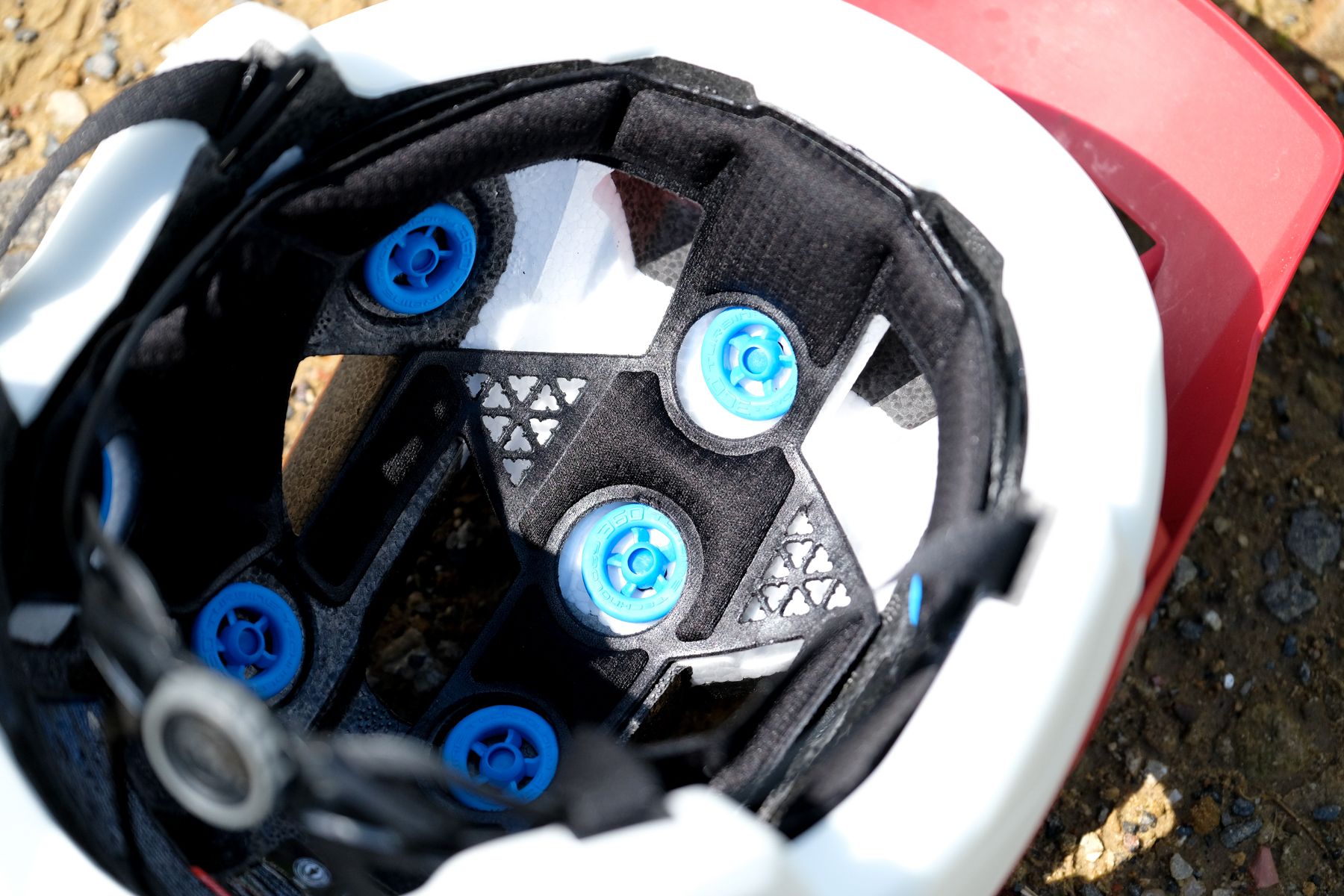
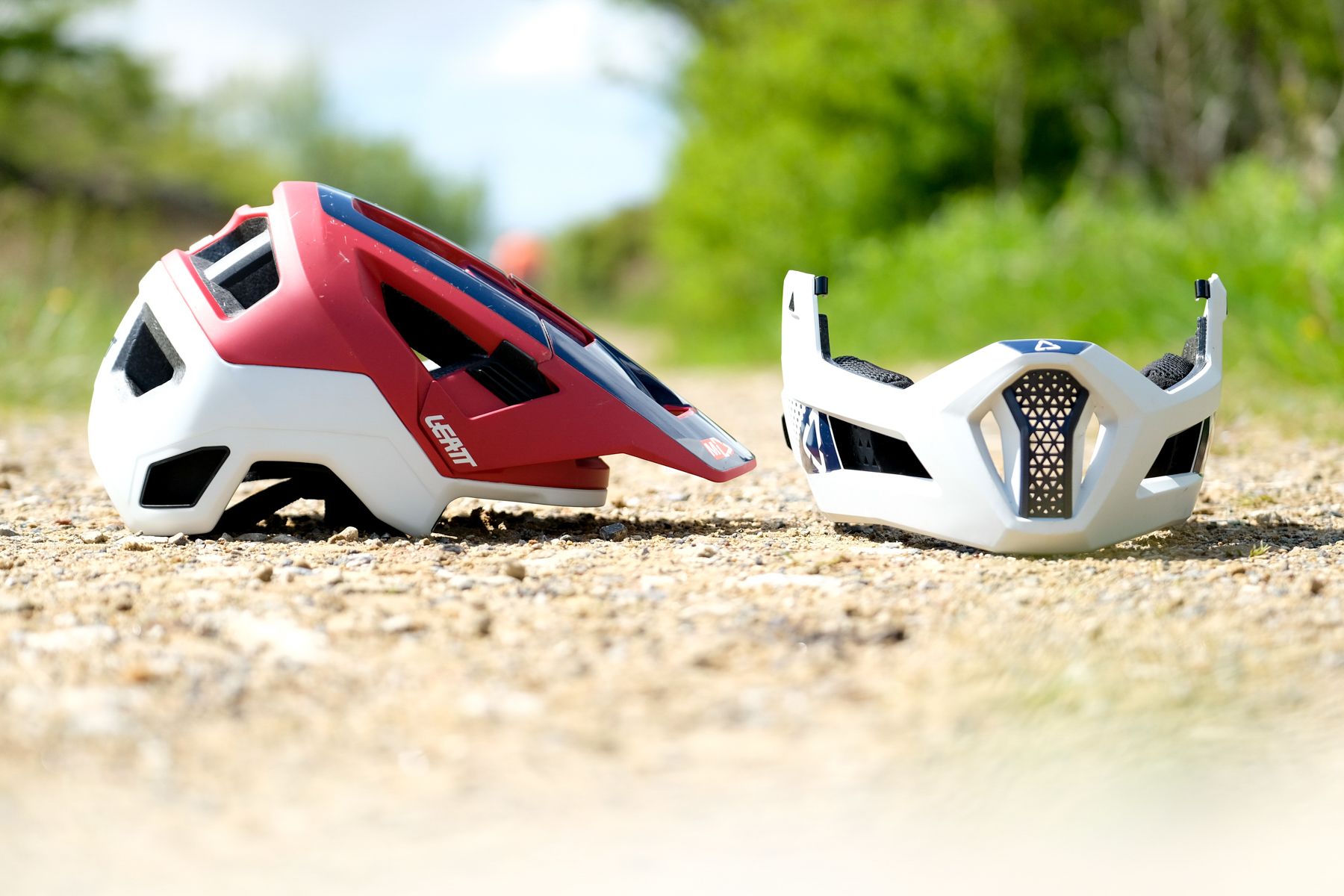
As a result, Leatt’s helmets incorporate their own Turbine Technology. These rubbery circles provide protection against rotational forces – already well publicised as a risk to riders, who are now very familiar with buying helmets with MIPS technology to address this. Unlike MIPs, Leatt’s Turbine Technology builds in an element of impact absorption to these squidgy circles, which are made from a non-Newtonian material that can absorb impacts without compromising its structure – unlike the external hard structures of a helmet. This means that on a Leatt helmet, your head is protected from the big hits by the hard outer shell, but also from the smaller knocks and rotational forces by the squidgy turbines that squash and twist with impact.
Talking to Chris, he’s full of facts and figures and data from studies. What comes across is not just that he finds the data worrying for brain health, but also that he’s excited by the possibilities that technology gives us in reducing these effects and risks. He thinks we’re not far off seeing inbuilt telemetry in mountain bike helmets being used to implement new concussion protocols for riders on the race circuit. He hopes that this will lead to much greater protections for pro-riders, who are not yet afforded the same duty of care by brands, sponsors or race organisers that players in American Football can for example now rely on.
His next quest is to investigate and prove whether the neck brace in conjunction with a full face helmet can actually protect from brain injury as well as spinal injury. This is the subject of his PhD, and while it’s all still to be finally peer reviewed and approved, he’s confident that the data shows that the coupling of these two pieces of kit provides better deceleration and dissipation of impact forces, meaning your brain gets a gentler ride inside your skull.
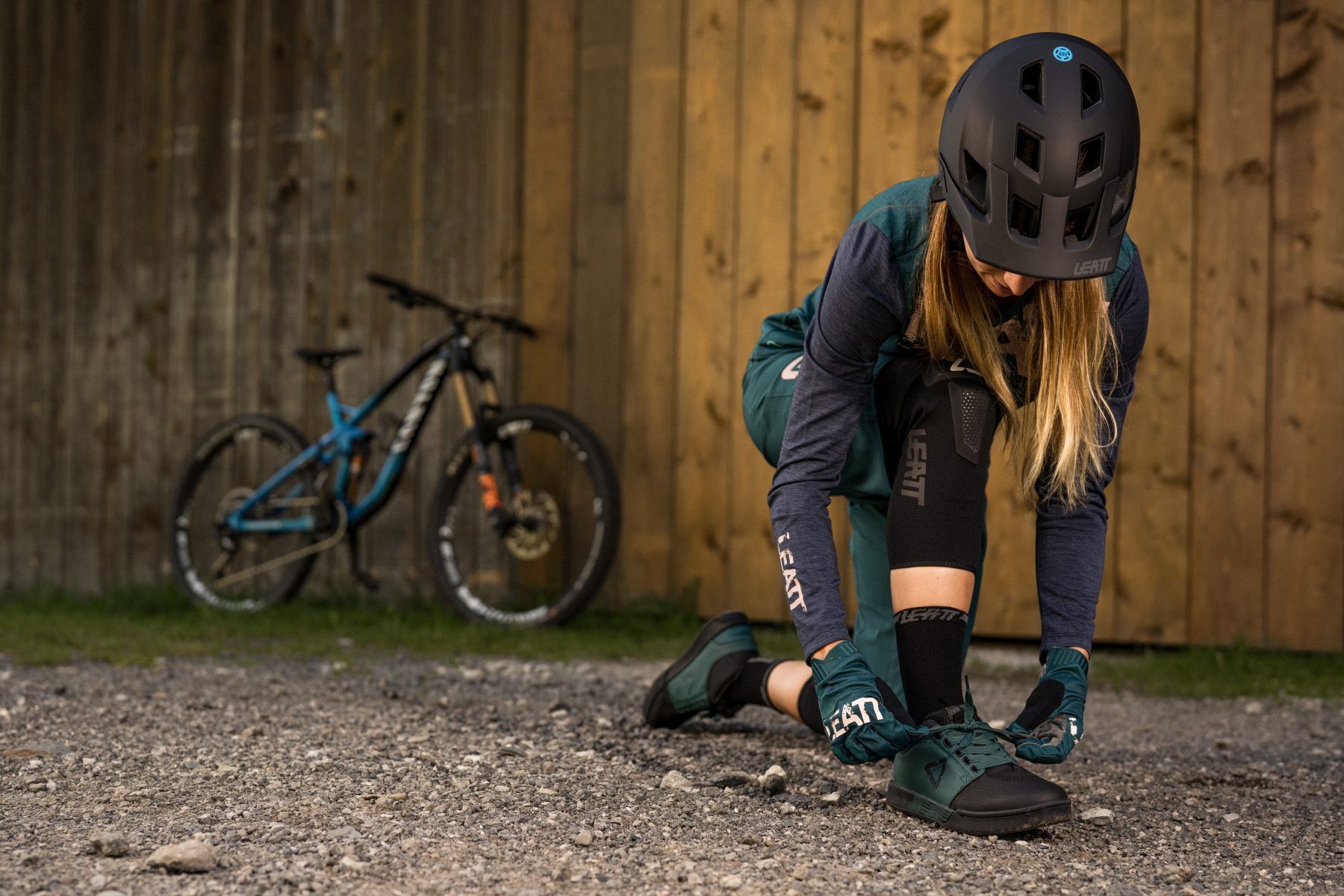
Statistics and data are all very well however, but numbers alone aren’t enough to make riders choose to wear protective gear. It has to be comfortable and not feel like it’s impeding your riding – that’s an obvious requirement. But we’re fickle, and we care what we look like, so we also need to feel cool in our gear. Other protective items such as knee pads are an obvious addition to the range, but Leatt’s move into offering a full package of shoes and clothing is part of its efforts to get us feeling like we want to wear its flagship helmet and neck brace gear too. If your shoes (with some protective features thrown in because toes are important too) complement your helmet you might just be more likely to choose that helmet – and then you might be just a bit more likely to pick the neck brace to wear with it. And while you can mix and match your helmet and neck brace brands, the lower profile of the Leatt helmets are designed to work optimally with the Leatt neck brace, so there’s a further functional benefit to being all matchy matchy.
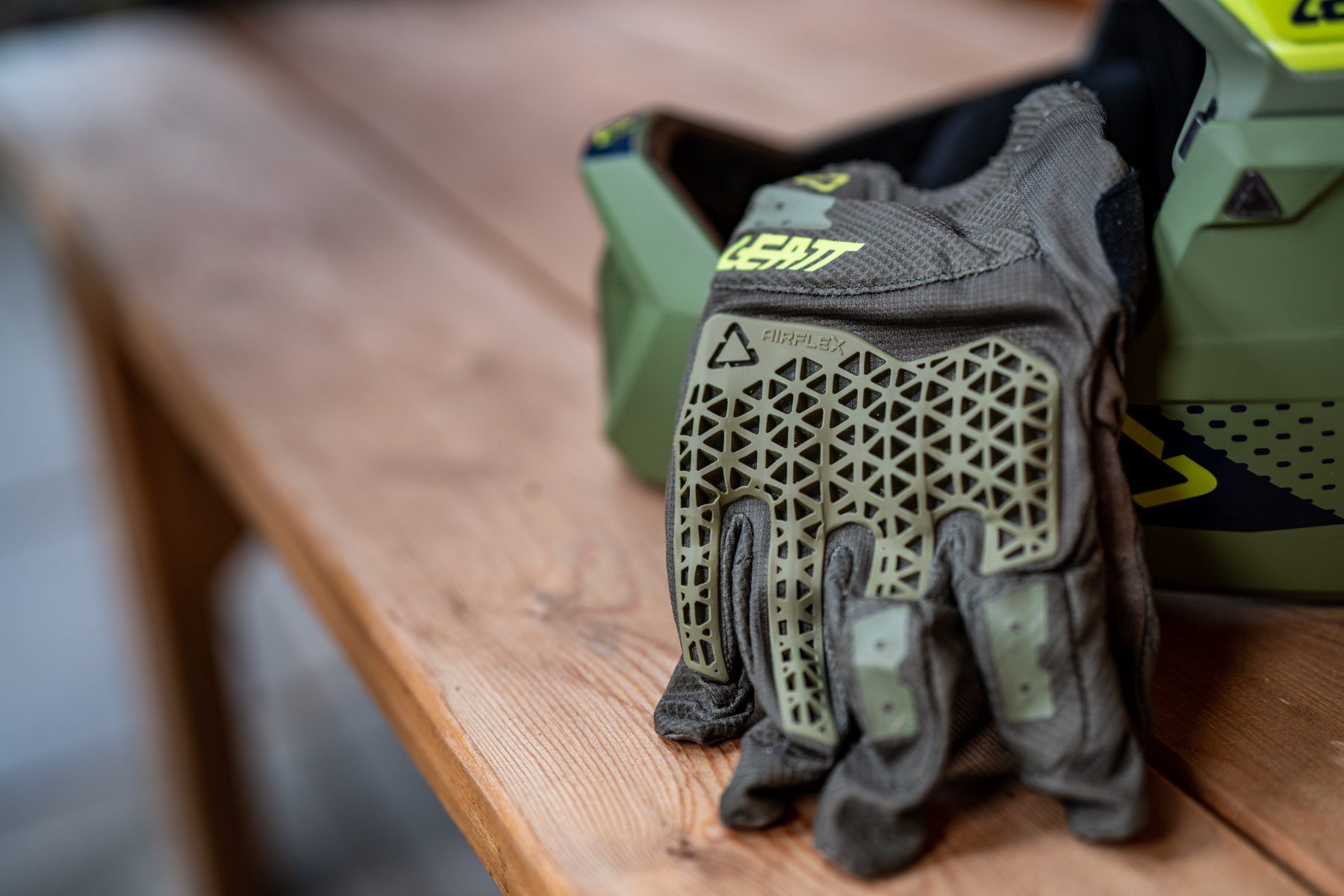
Now yes, I’m sure Chris wants us to buy his kit because he’s got bills to pay, but talking to him the overwhelming impression is of concern. This comes across as sitting between the Dr Leatt medical quiet voice that you get when a doctor tells you that you need to cut down on pies if you want to see your next big birthday, and the voice I imagine he used if his kids confessed to getting a detention at school. He accepts that you can’t take all the risk out of anything – as a pilot and vintage motorbike collector he’s clearly pretty comfortable with risk assessment – but he does think we can make good and informed choices.
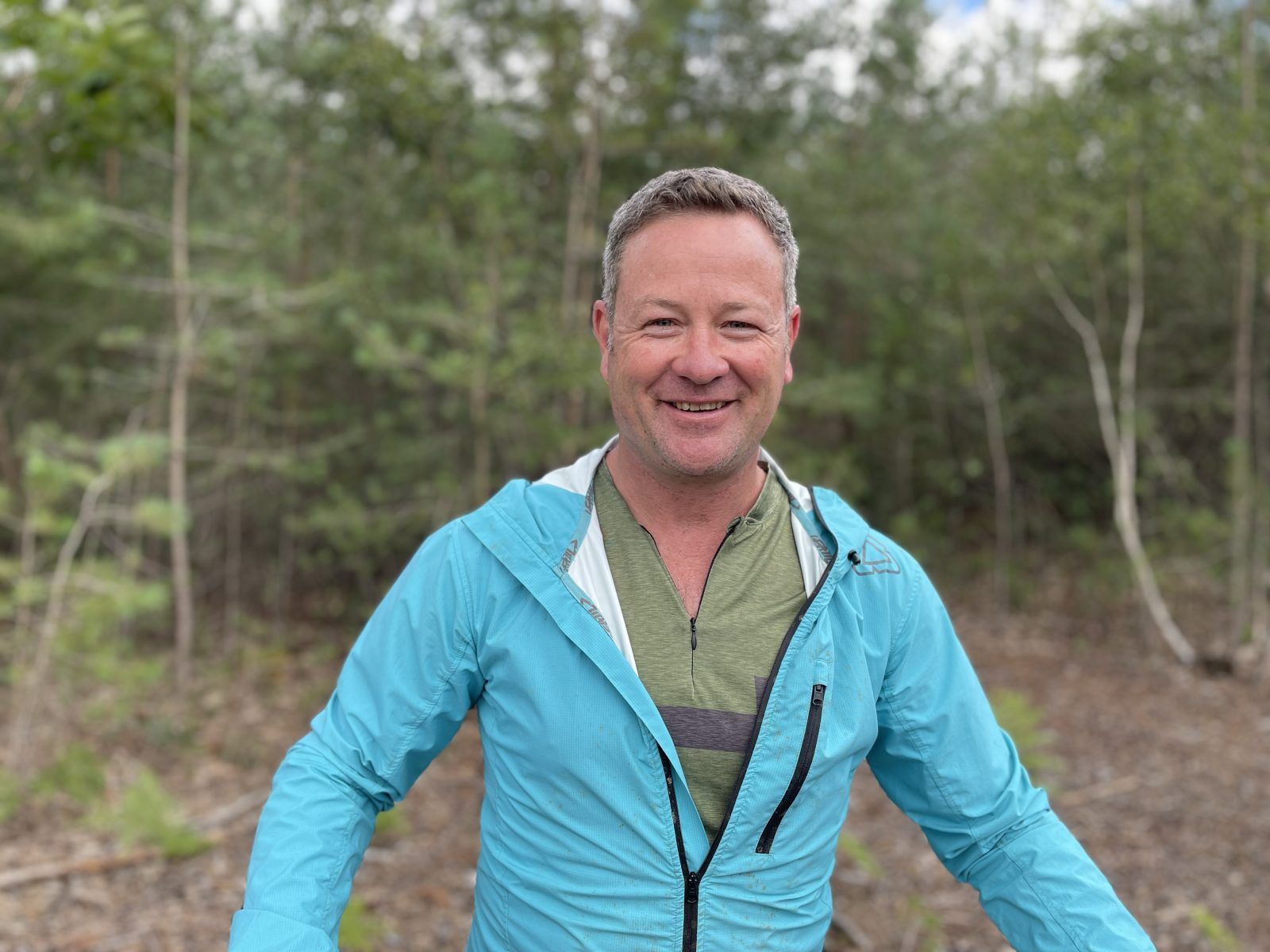
Leatt’s motto is ‘The Science of Thrill’, and having met Chris this seems to fit perfectly with what he’s trying to achieve. Dr Leatt is no safety potato – he’s happy for us to continue our thrill seeking, but he wants us to do so armed with equipment that is scientifically developed and tested to protect us when things go wrong. It’s marketing, but the medical and analytical mind that’s behind the scenes working on the products brings an extra level of integrity to things that certainly makes me think harder about my equipment choices.
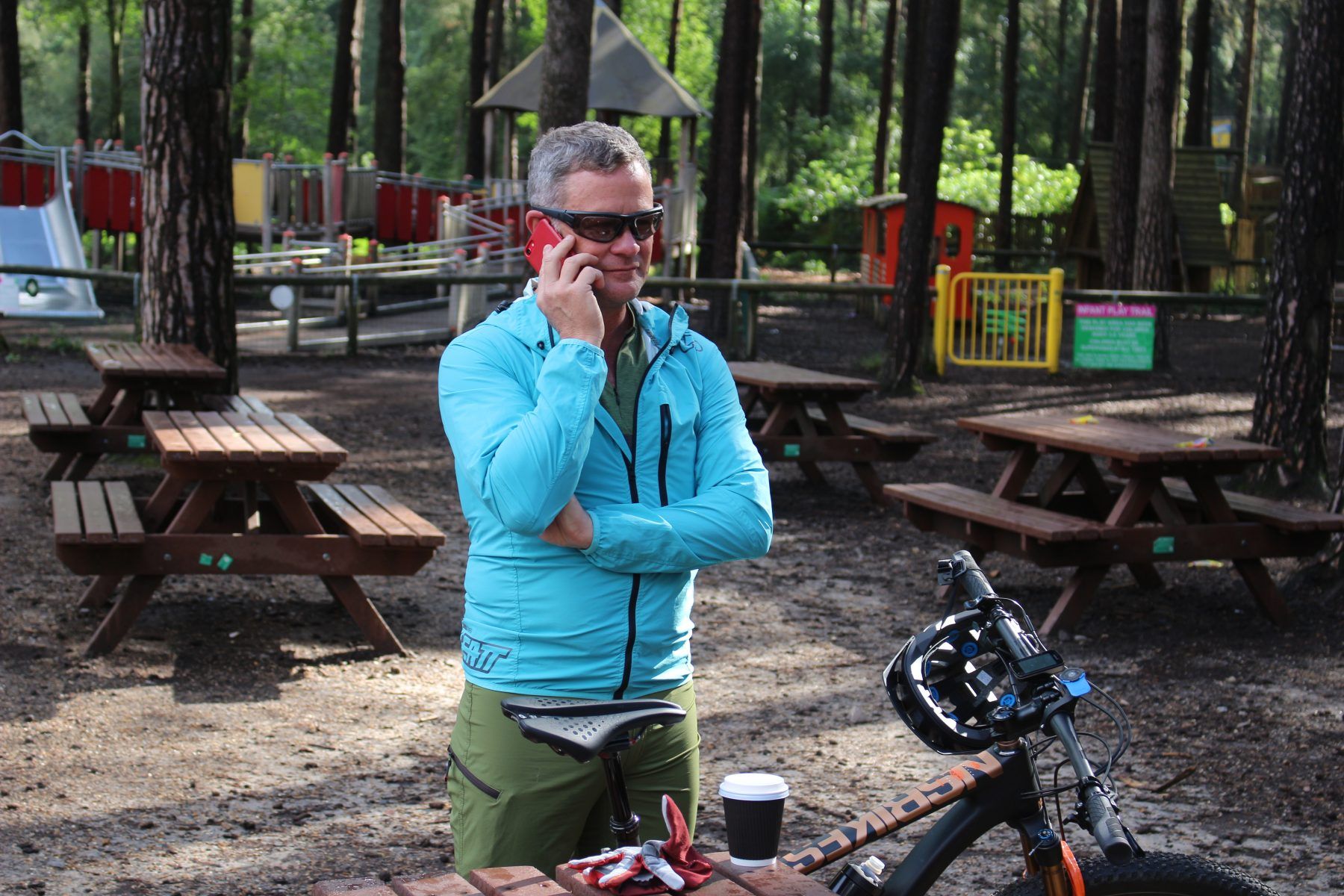
Even the finest of minds can make mistakes however, and our ride around Swinley has the background hum of a mini drama. Just as we were finishing up our pre-ride faff, Chris shut the boot of his car, only to discover that he’d locked the keys inside. One very apologetic call to his wife later, and she was undertaking a three hour round trip back from visiting relatives to bring him the spare. A number of references were made during the ride to the need to take her out for a very nice dinner, though with all the pedalling we were doing I’m not sure if it was penitence or hunger that were bringing thoughts of food to the fore.
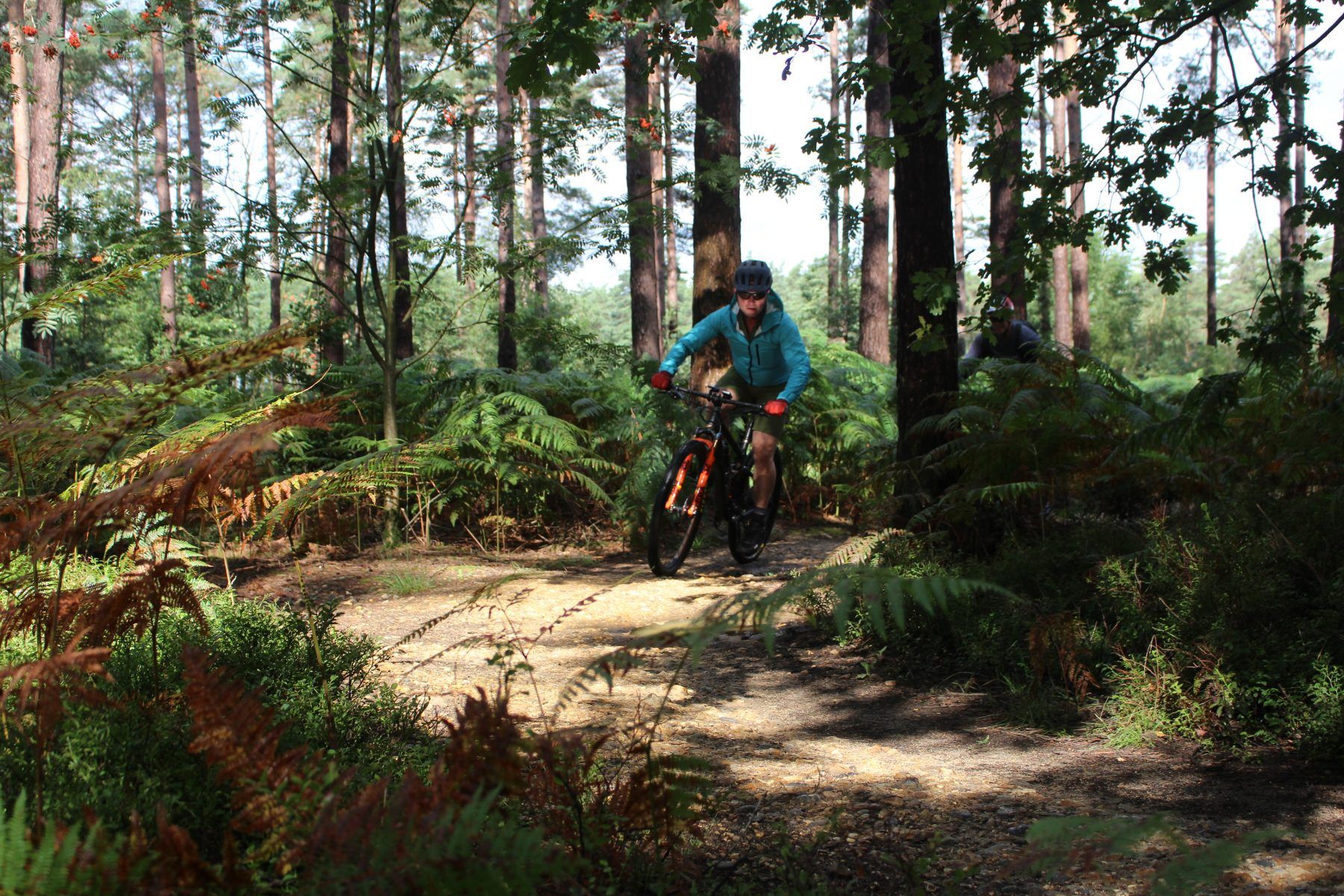
While many of Leatt’s sponsored athletes might be found throwing themselves down hillsides and into backflips, Chris’ mountain bike preferences are for the sort of long, pedally, endurance racing and riding that makes me wish he’d turn his design attentions to the protection of nether regions and saddle construction. Glancing at his Garmin he notes that our pace around Swinley is very slow, but as I find myself dropped on every climb so I can hardly blame the photo and chat stops for this. Despite the (by his measure) snail’s pace, as we roll back to the car park he’s full of chat about how great it was to get out and ride, and declarations that he might just check how far away his wife is with the spare key before heading out to do another lap.
Just as we’re packing up our own gear, Chris returns with a look on his face that really really makes me wish I hadn’t just put away the camera. His wife has made good progress and is nearly here – he doesn’t have time for an extra lap. He has however discovered that one of the doors on the car wasn’t locked after all, and he’s managed to get back into the car and retrieve his own key. I imagine that dinner he’d promised came with all the recommended wine accompaniments, desert, a cheese board, and a side serving of very humble pie.

Ah well, a good morning out on the trails was had nonetheless, and in the process I learnt a whole lot about brain and spinal injury that leaves me excited to see how in the not too distant future, technology might help give riders both physical protection and factual information to improve their safety.
Man: Doctor, my son has swallowed a key.
Doctor: When?
Man: Three months ago.
Doctor: My God! What were you doing till now?
Man: We were using a duplicate key.


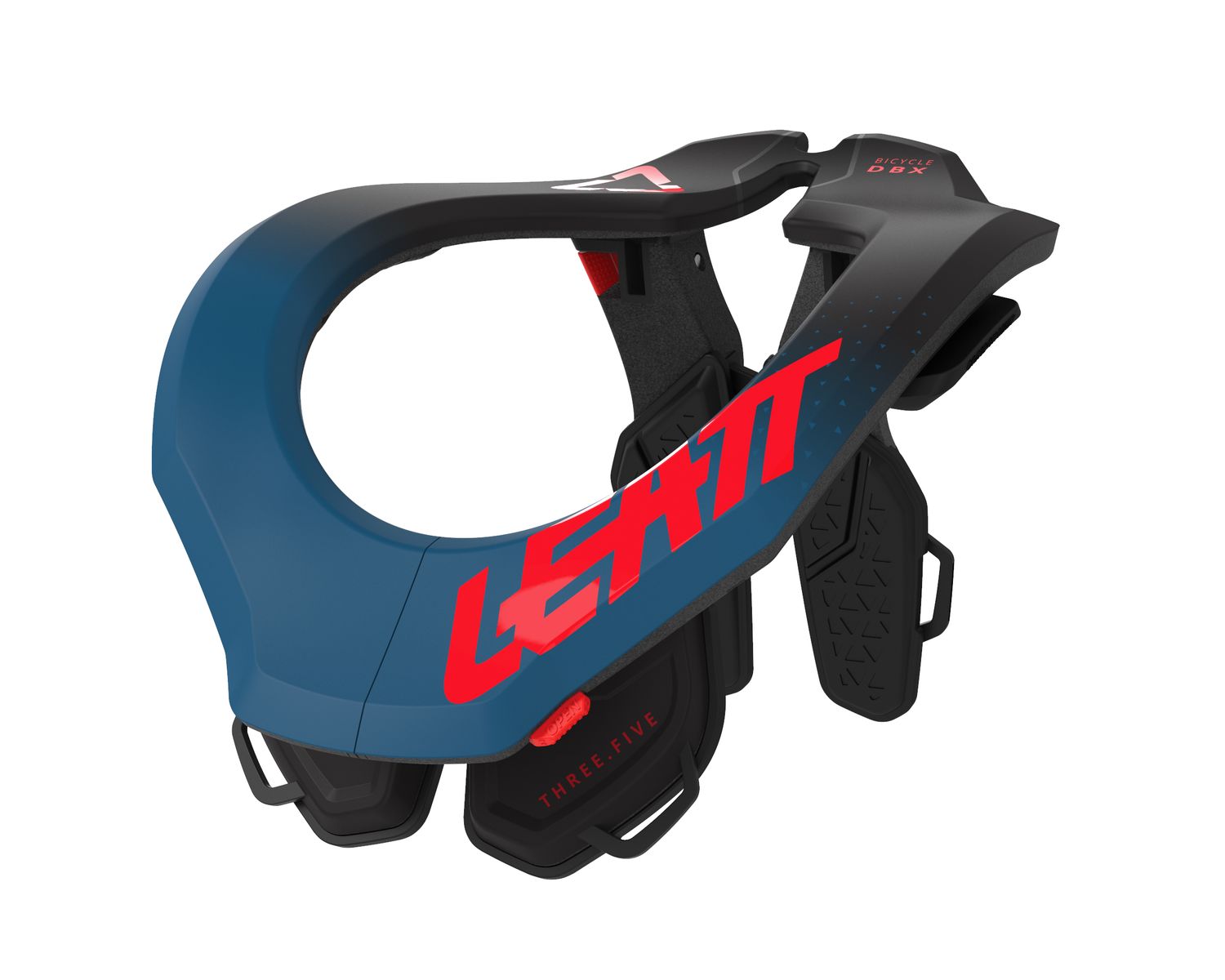

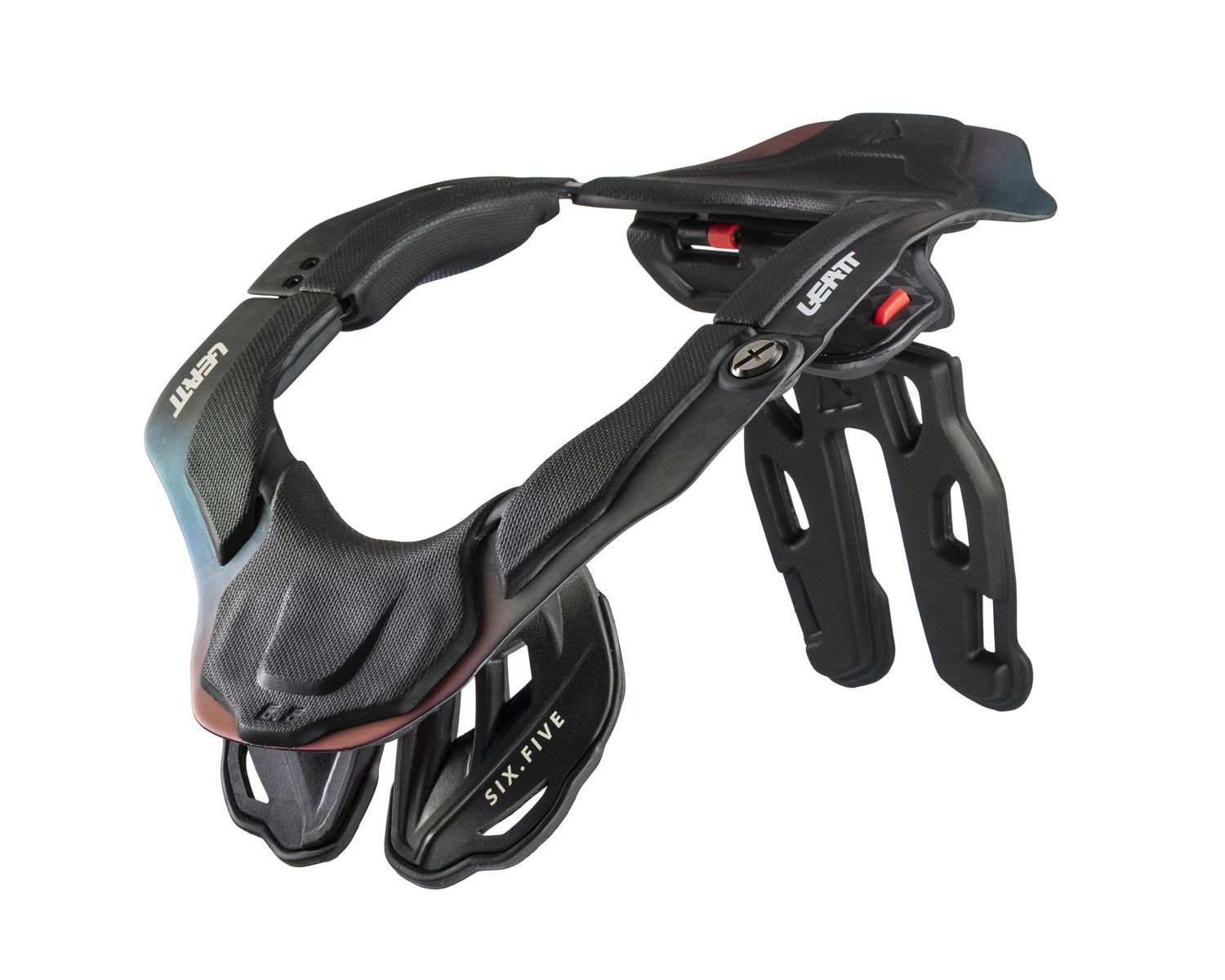

The topic ‘Heads, Shoulders, Knees and Toes – Leatt’s Quest To Protect Them All’ is closed to new replies.